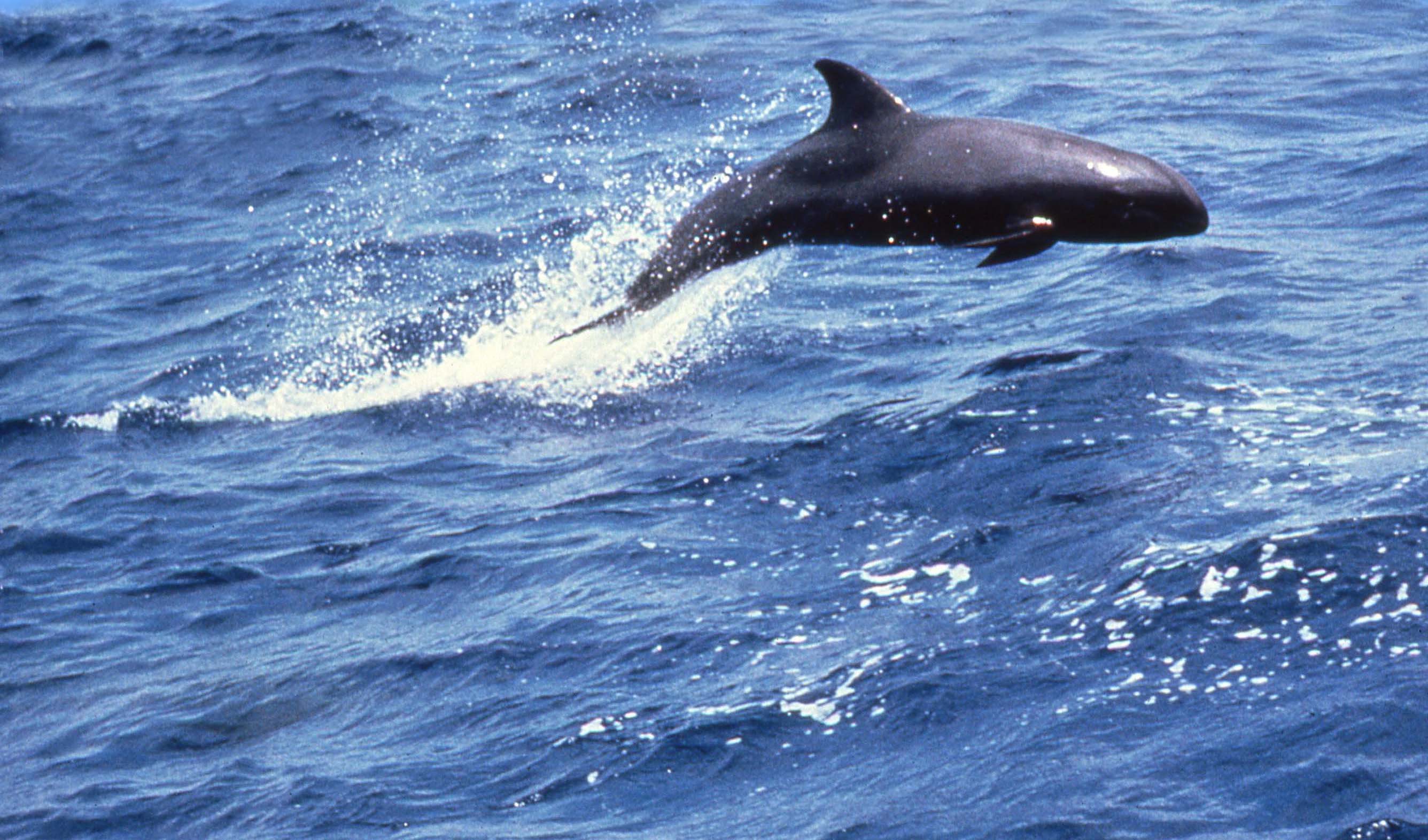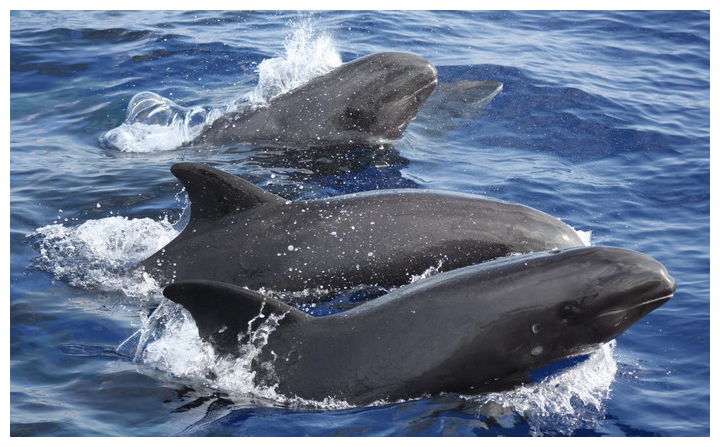Melon-headed whale
Melon-headed Whale ( Peponocephala electra )
The Melon-headed Whale ( Peponocephala electra ) is the only species within the genus Peponocephala and belongs to the dolphins ( Delphinidae ). He is found in all tropical waters worldwide, but there are quite a few sightings due to its preference for deeper regions.
Features
Full grown the whale has a length of about 2.1 to 2.7 meters and weighs about 160 kilograms. The body is torpedo-shaped with a slender, tapering head, the animal owes its scientific and English names. The snout is blunt. The mouth is surrounded by white, light gray or pink lips glow. The body is blue-black, dark gray or dark brown in color. The facial area is darker, creating the impression of a face mask is created, and on the back is also a darker, Cape -like stain. A discreet, light gray anchor patch is on breast, a bright gray or off-white on the posterior abdominal. The flippers are long and pointed, the fin is high and falcate with a pointed end. In profile, the Melon-headed Whale Orca differs from the Small with a less rounded head. The tail is narrow. The flukes are broad with a slight indentation in the middle and clearly concave trailing edges. The females have a narrower Fluke than the males.
Way of life
Relatively little is known about the Melon-headed Whale, the bulk of the scientific evidence comes from studies of stranded specimens. The Melon-headed Whale often jumps in shallow jumps out of the water. The animals form large schools with mostly 100 to 500, and occasionally over 1000 animals. As a dietary used cuttlefish and squid and fish.
Dissemination
The Melon-headed Whale is found in all tropical and subtropical seas around the world. In the northern areas it penetrates occasionally in temperate waters, which northernmost sighting originates from the south coast of Ireland. However, he has in the area between the northern and southern latitude 20 The main distribution. Sightings take place mainly off the continental shelves. In the waters around Hawaii and in the Tanon Strait, between the islands of Negros and Cebu (Philippines), are among the places where a sighting is most likely.
Taxonomy
In its first description in 1966 the species was assigned to the short snout dolphins ( Lagenorhynchus genus ), but later placed in a separate genus Peponocephala Nishiwaki and Norris, 1966. Here, Pepono derives from the Latin name of the vegetable marrow (Cucurbita pepo) and probably represents a mistranslation of Neubenenner is that the name according to the usual English- language name ' Melon -headed Whale ' (= ' melon headed whale " ) selected while the melon with the pumpkin confused. Accordingly, would mean the current correct translation of the genus name " pumpkin headed whale ."
Evidence
- Mark Carwardine: whales and dolphins. Delius Klasing, Bielefeld 2008, ISBN 978-3-7688-2473-6, pp. 156-157.










